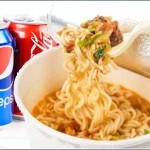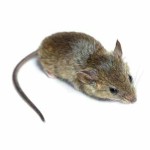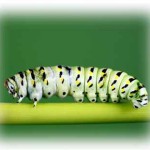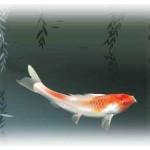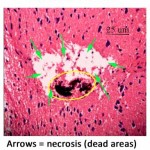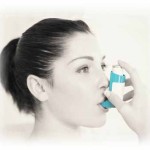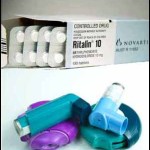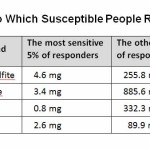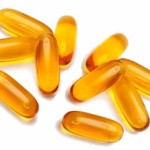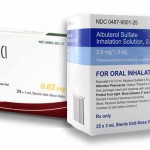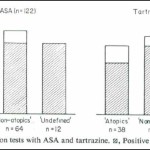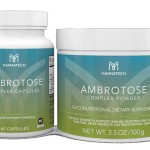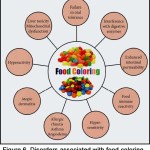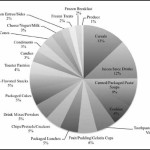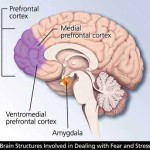Seizures (also called “fits” or convulsions) are episodes of disturbed brain function that cause changes in attention or behavior. They are caused by abnormally excited electrical signals in the brain. There are a number of different types of seizures, including … Continue reading →
This gallery contains 2 photos.
International Forum of Allergy & Rhinology. 2016. April; 6(4): 385-91 30 patients diagnosed with aspirin sensitivity and aspirin-exacerbated respiratory disease (AERD) were entered into a diet trial. They ate either a regular diet or a low-salicylate diet for 6 … Continue reading →
This gallery contains 2 photos.
Acta Otorhinolaryngologica Belgica. 1995;49(3): 235-50. In this review of aspirin-sensitive rhinosinusitis, it is described as a non-allergic, non-infectious perennial eosinophilic rhinitis starting in middle age and rarely seen in children. It may also been seen in atopic patients who have … Continue reading →
These are nodules that form in the cavities behind the nose and adjacent to the sinuses. They are little sacs that develop by themselves or in groups, and a single polyp can become as large as a grape. There isn’t … Continue reading →
This gallery contains 2 photos.
Childs Nervous System. 2011 May;27(5): 793-802 This is one of the first studies to investigate the relationship between dietary components and Tourette syndrome (TS). Using the laboratory that tested the Olympic Games contestants for illegal stimulant drugs, the researchers tested … Continue reading →
In 1885 Dr. Georges Gilles de la Tourette first described nine patients with the syndrome of multiple motor and vocal tics, a movement disorder that now bears his name. Tourette syndrome (TS) is defined by multiple motor and vocal tics … Continue reading →
There are many kinds of headache, including tension headaches, cluster headaches, vascular headaches, caffeine withdrawal headaches, ice-pick headaches, and migraines. Migraines are chronic headaches that can cause significant pain for hours or even days. Symptoms can be so severe that … Continue reading →
This gallery contains 3 photos.
Mutation Research. 2002 Aug 26; 519(1-2): 103-19. Sasaki et al, in Japan, tested 39 common food additives — dyes, color fixatives, preservatives, antioxidants, fungicides, and sweeteners. They gave each additive separately by mouth to groups of four male mice, and … Continue reading →
Intestinal symptoms – both diarrhea and constipation – seem to go along with symptoms of both ADHD and autism. For some, their ADHD symptoms could be due to undiagnosed celiac disease even when there are no intestinal symptoms. For others there … Continue reading →
Nystagmus is a condition in which there are rapid involuntary movements of the eyes in any direction. Blurred vision may result. Strabismus is sometimes called “crossed eyes.” This condition is the lack of coordination between the eyes, with one or … Continue reading →
Once a rare occurrence, frequent or chronic inflammation of the middle ear has come to be seen as a “normal” aspect of childhood in the United States. Generally, ear infections are treated with antibiotic drugs. Often, ear tubes are implanted. … Continue reading →
One of the scientists at Novartis Pharmaceuticals, Kristjan Kehler, studied the medical records of more than 43,000 children with eczema. He found that they were far more likely than those without it to later receive a diagnosis of ADD. Moreover, … Continue reading →
This gallery contains 2 photos.
Annals of General Psychiatry (2015) March 1; 14:12 This was a study on children with ADHD in Iran who were already receiving Ritalin therapy, to see if improving their diet in general might make a difference. The children were divided … Continue reading →
“Clinical depression” is the name for the persistent disabling condition of joylessness that affects tens of millions of Americans. It is believed to be a major cause of suicide. While depression is not new, the numbers affected have risen and … Continue reading →
In the summer of 1995, Hans Eibert of the University of Copenhagen announced in the journal Nature Genetics that he had found the approximate location of the gene believed to be responsible for enuresis, or bedwetting, which affects about 8 … Continue reading →
This gallery contains 1 photo.
Journal of Attention Disorders, Vol. 3(1): 30-48 (1999) This review of “alternative” treatments was undertaken for the National Institute of Health (NIH) 1998 Consensus Development Conference on ADHD. 23 treatments were identified. Some were considered effective or possibly effective for … Continue reading →
This gallery contains 2 photos.
Journal of the American Academy of Child and Adolescent Psychiatry. 2012 Jan; 51(1): 86–97.e8. This meta-analysis of 24 published studies on food colors, plus 10 more on dietary restriction, concluded that a restriction diet (e.g., the Feingold diet or an … Continue reading →
This gallery contains 2 photos.
Pediatric Nursing. 2007 Mar-Apr; 33(2): 138-43. This review is intended to help nurses support parents who want to try various therapeutic diets such as the Feingold diet, oligoantigenic (few foods) diet, or gluten-free, casein-free diet for their children. The nurses … Continue reading →
This gallery contains 1 photo.
Journal of Paediatrics and Child Health. 1997 June; 33(3): 190-4. The author summarizes and discusses the research from the 1970s up until the 1990s. She emphasizes that studies often only can deal with a single item but in actuality there … Continue reading →
This gallery contains 2 photos.
Applied Psychophysiology and Biofeedback, 2003 March; 28(1): 63-75. In this paper, Schnoll reviews the research on food additives, refined sugars, food allergies, and fatty acid metabolism as it relates to ADHD. QUOTE: “Although clinicians and researchers alike acknowledge the complex … Continue reading →
This gallery contains 1 photo.
Scientific Reports, 2016 Jan 5;6:18989. Air pollution is good for something …. if you are a pigeon racer. It seems that in northern China, homing pigeons fly home lots faster through polluted air. The authors say it isn’t yet clear … Continue reading →
This gallery contains 3 photos.
Scientific Reports, 2016 March 31;6:23819 The purpose of this study was to better understand how the widely used titanium dioxide may impact the environment. The researchers used swallowtail butterfly larvae which were hatched on plants growing in water containing titanium … Continue reading →
This gallery contains 2 photos.
Environmental Monitoring and Assessment. (2016) 188:575 This Swiss study looks at the effect of two kinds of nanoparticles, separately and combined. Both copper oxide (CuO) and titanium dioxide (TiO2) ultrafine particles (nanoparticles or NP) are widely used in many things … Continue reading →
This gallery contains 2 photos.
Nanotoxicology. 2016 Sep;10(7):902-12. In this study, 25 µg/L and 250 µg/L of the food color additive titanium dioxide (TiO2) nanoparticles were added to outdoor mesocosms* placed in a lake. The control mesocosm was not treated with any TiO2. * A … Continue reading →
This gallery contains 3 photos.
Journal of Biomedical Materials Research Part A. 2014 Feb; 102(2): 470-8. Titanium dioxide is a naturally occurring white powder approved by the FDA. It is used as a white coloring in many products we use every day such as toothpaste, … Continue reading →
This gallery contains 1 photo.
Toxicology and Industrial Health, 2013. March; 29(2): 224-32. doi: 10.1177/0748233711433935 The researchers wanted to evaluate the toxic effect of some synthetic colorants and/or flavors on body organs and metabolism in rats. They used 10 groups of 10 male albino rats … Continue reading →
ABDEL-SAMIE 2008 – Erythrosine, a colour additive, induced hepatotoxicity in albino rats: Histological, ultrastructural, and biochemical studies. ABHILASH 2011 – Effect of Long Term Intake of Aspartame on Antioxidant Defense Status in Liver ABHILASH 2014 – Chronic effect of aspartame … Continue reading →
This gallery contains 2 photos.
Schweizerische medizinische Wochenschrift (Swiss medical weekly), 1981. Sep 26; 111(39): 1445-50 Wuthrich wrote that adverse reactions to aspirin, additives such as tartrazine (Yellow 5) and the preservative benzoate are seen all over the world. It is described as an intolerance … Continue reading →
This gallery contains 1 photo.
Journal of Allergy & Clinical Immunology, 1979 Dec;64(6 Pt 1):500-6 In this study, a positive response was defined as a 20% fall in forced expiratory volume in 1 second (FEV1) for up to 4 hours. The researchers tested several hundred … Continue reading →
This gallery contains 2 photos.
Tohoku Journal of Experimental Medicine, 1979. Nov; 129(3): 303-9. In this study on guinea pigs, the researchers showed that the dye Yellow 5 potentiates asthmatic reactions to other broncho-constrictors. In other words, the dye may not cause an asthma attack … Continue reading →
This gallery contains 2 photos.
Prenatal Diagnosis. 2016, Sep 29. doi: 10.1002/pd.4932 Edlow reviews the current animal and human research showing a connection between maternal (and sometimes paternal) obesity and high fat diets on neuro-developmental and psychiatric disorders in the offspring. These disorders include cognitive … Continue reading →
This gallery contains 3 photos.
Toxicology International. 2015 Jan-Apr; 22(1): 152–157. This study was done to see if the common food colors tartrazine (Yellow 5), metanil yellow (a non-permitted color often used illegally) and sunset yellow (Yellow 6) may play a part in liver disease. … Continue reading →
This gallery contains 1 photo.
Journal of Attention Disorders. 2010 Jun 23. In Norway, the Prescription Database contains information on all prescription drugs dispensed since 2001, which creates a unique opportunity to address the issue of whether the diagnoses of ADHD and asthma are associated … Continue reading →
This gallery contains 2 photos.
Journal of Clinical Epidemiology, 1995. Oct;48(10):1269-75 Corder estimated safe doses to use for epidemiological studies by studying reactions of patients in an allergy clinic. He said that reactions to the four compounds listed in the table are common, and may … Continue reading →
This gallery contains 2 photos.
British Journal of Dermatology, 2008. Dec;159(6):1368-9. This is a case report of several patients with disabling salicylate-induced intolerance including severe urticaria, asthma, and anaphylactic reactions. After dietary supplementation with 10 g daily of fish oils rich in omega-3 for 6-8 … Continue reading →
This gallery contains 2 photos.
The Journal of Allergy & Clinical Immunology, 113(2), Suppl, S32 Both Levalbuterol (LEV) and racemic Albuterol (RAC) are bronchodilator medications used for asthma, but parents complain that children are more restless and hyperactive after taking LEV. In this study, attention … Continue reading →
This gallery contains 2 photos.
International Journal of Environmental Research and Public Health, 2016 July 4;13(7). pii: E678. In this study of Taiwanese children, a strong correlation was found between amount of sugar-sweetened beverages (SSB) consumed per day and ADHD. A dose-response effect was observed, … Continue reading →
This gallery contains 2 photos.
Physiology & Behavior, 135 (2014), 174-179. SULT1A inhibitors in foods, including natural substances and artificial food colors, have a role in ADHD that can both worsen or improve symptoms. … SULT1A inhibition can influence brain catecholamines through the intermediary of … Continue reading →
This gallery contains 2 photos.
Cell Metabolism, 2016 July 12;24(1): 75-90 Both flies and mice have the same pathways which are triggered by sucralose (Splenda) to make the body think it is starving and increase the desire to eat. Wang explains that a sweet taste … Continue reading →
This gallery contains 4 photos.
Little Debbie Swiss Rolls Use Yellow, Red, and Blue Dyes to Make ‘Chocolate’ Cake Reprinted from article published by the Center for Science in the Public Interest, July 18, 2016 Little Debbie Swiss Rolls have a combined 32 milligrams of … Continue reading →
This gallery contains 1 photo.
Environmental Health Perspectives, 2012. Jul;120(7): 935-43. In this study, the authors measured chemicals in cosmetics, personal care products, cleaners, sunscreens, and vinyl products, to determine what they contain in the way of asthma-causing chemicals and endocrine disruptors (chemicals that mess up … Continue reading →
This gallery contains 2 photos.
Prostaglandins and Medicine, 1978 Dec;1(6):499-505 The authors discuss the bronchoconstriction caused by tartrazine (Yellow 5) in people who are aspirin-sensitive, as well as its effect on the prostaglandin system of guinea pig lungs. They found that the dye inhibits formation … Continue reading →
This gallery contains 1 photo.
Annals of Allergy, 1977. Mar;38(3): 206-10 In this paper, Lockey describes the battery of tests he had developed to determine sensitivity to food additives and analgesics, which he says can make symptoms of asthma and chronic urticaria (hives) worse. MedLine … Continue reading →
This gallery contains 1 photo.
Annals of Allergy 1977 Jul;39(1):28-37 This is an early review of the combination of asthma, nasal pathology and intolerance to aspirin as a “unique syndrome” with a tendency for diabetes as well as a prolongation of bleeding time. Abrishami mentions … Continue reading →
This gallery contains 2 photos.
Clinical Allergy. 1976 Mar;6(2): 119-29. In this study, Stenius and Lemola used far less of tartrazine (Yellow 5) and aspirin than what a person may normally ingest, and had to overcome chronic medication as well (see NOTES below). Nevertheless, they … Continue reading →
This gallery contains 3 photos.
Journal of Allergy and Clinical Immunology, 1975. Sep;56(3): 215-21 The authors presented their evidence that in aspirin intolerance there are two mechanisms – one causing bronchospasm (breathing difficulty such as in asthma) and the other causing urticaria (hives). They also … Continue reading →
Autism used to occur in about 15 of every 10,000 births (1 in 667 children) but that number has risen until today more than 1 in every 68 children in general, and 1 in 42 boys is on the “autism … Continue reading →
In 1978, the Program Plan of the Law Enforcement Administration of the United States Department of Justice, concluded: “Today, the most important issue of rehabilitation is the growing conviction among both experts and lay persons that most treatment has been … Continue reading →
In the beginning, as in so many other afflictions where the cause is not understood, parents seeking help for their children’s asthma problems found themselves blamed for it. A past president of the College of Allergists was actually quoted in … Continue reading →
Critics say that “studies show” that the Feingold Diet helps only 5% (or 2% or 1%) of the children who use it. They generally don’t cite any studies to support this, which is understandable, since there aren’t any. Often, the … Continue reading →
This gallery contains 2 photos.
International Journal of Nursing Studies, 2005 Feb;42(2):229-41 In this review, it is noted that deficiencies in cholesterol, tryptophan (an amino acid), protein, iron, or zinc are each connected to an increase in aggression as well as cognitive and behavior problems. … Continue reading →
This gallery contains 2 photos.
Integrative Physiological and Behavioral Science, 1998, Jan-Mar;33(1):49-60 This was a small study of 17 children, some on medications and some not. During the study, some of those on medication had their meds reduced by half and some did not. For … Continue reading →
This gallery contains 1 photo.
Physiology & Behavior 2015, Jan. 138:179-87. This is a small study showing that autism is both genetic and environmental. The more “bad” microbes in the gut, the worse the autism, and probiotics helped. QUOTE: “This pilot study suggests the role … Continue reading →
This gallery contains 1 photo.
Alternative Therapies in Health and Medicine, 2015. 21 Suppl 1:52-62. During the past 50 years, the amount of synthetic dye used in foods has increased by 500%. At the same time, there has been an alarming rise in behavioral problems … Continue reading →
This gallery contains 1 photo.
Clinical Pediatrics, 2016 Oct; 55(12): 1113-1119. In this study, 810 products commonly marketed to children and found in a local grocery store were evaluated. 43.2% of them contained artificial food colors (AFC), mostly Red 40, Blue 1, Yellow 5, and … Continue reading →
This gallery contains 1 photo.
Clinical Pediatrics, 2015 Apr;54(4):309-21, e-published April 24, 2014 Numerous foods and candies were purchased from local stores and processed to measure the amount of food dyes actually in them. Several comprehensive tables provide the details, but below is a sample: Some … Continue reading →
This gallery contains 1 photo.
Clinical Pediatrics, 2014. Feb; 53(2): 133-40. The amount of food dyes certified over the years has increased more than 5-fold since 1950 (12 mg/capita/day) to 2012 (68 mg/capita/day). Studies that used 50 mg or more of food dyes showed a … Continue reading →
This gallery contains 1 photo.
Journal of Child Psychology & Psychiatry, 2014 May;55(5):416-27. The author compares 3 kinds of studies for treatment of ADHD – restricted elimination diets (RED), artificial food colour elimination (AFCE), and essential fatty acid (e.g. fish oil) supplements (SFFA). He concludes … Continue reading →
This gallery contains 1 photo.
The Medical Journal of Australia, 2013. Jun 17; 198(11): 600-2. Gray was treating patients who had tried the low-salicylate diet (called the FAILSAFE diet) used in Australia, which is more restrictive than the Feingold diet, eliminating both more of the … Continue reading →
This gallery contains 1 photo.
JMED Research, Vol. 2013 (2013) This is a review of the studies about MSG and its influence on different systems in humans. Effects of injected MSG into rats included neuron damage, and prefrontal cerebral cortex changes, but such tests cannot … Continue reading →



